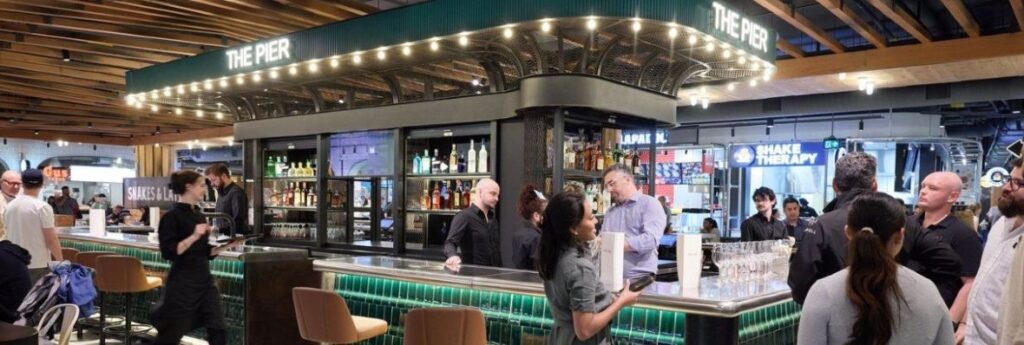For decades, Canada’s food courts were cookie-cutter spaces jammed with the same dozen or so chains hawking dishes ideal for lunch breaks or snacking at the mall. But a new wave of dining spaces has thrown that playbook out the window, sandwiching dozens of lesser-known brands with growing followings into chic sites, where both locals and tourists have a dizzying array of cuisines to feast on at a table of their choosing.
The spaces, known as food halls, have turned Canada’s approach to commercial and communal dining spaces upside down as they spread from coast to coast.
These days, most of the country’s major cities have at least one food hall, if not several, and many think this is just the beginning.
“You’re going to see more of them over time and you’re going to have, I think, a population that really desires these new kinds of food experiences,” said Jonathan Gitlin, chief executive of RioCan Real Estate Investment Trust. “There’s a lot of room and space for more of these types of markets.”
His company recently got in on the food hall trend when it recently opened a 50-vendor dining space called Wellington Market in a pocket of the Well, a gargantuan new residential, office and retail complex located at Front and Spadina in Toronto’s entertainment district and a stone’s throw from the Rogers Centre.
The market can hold 3,400 people and has everything from lobster rolls to ramen noodles and falafel on offer. There’s even a grocer, a florist and a wine shop on site and an adjoining event venue set to host painting, mixology, food and photography classes.
The vision for the Wellington Market came together years ago, when RioCan sent out staff to walk the streets of Toronto and uncover a mix of brands considered to be hidden gems.
Back then, Gitlin recalls that “food halls were starting to become a bit of a craze” but hadn’t reached their recent level of ubiquity.
The Wellington Market houses Toronto’s first Japadog restaurant, its third Rosie’s Burgers shop and its fourth Islands Caribbean Cookshop.
Though it’s hard to trace the modern origins of the food hall, many believe the model harkens back to European department stores, which opened food halls on London’s high streets decades ago, or to Eataly – a chain of Italian food emporiums featuring a grocery component, a bar and sit-down and quick-service restaurants.
Now, Toronto has at least five food halls in the downtown core alone and several have sprung up in Montreal, Calgary, Ottawa, and beyond, with more on the way.
The Oakridge Park shopping centre in Vancouver will get a food hall next year, around the same time that Eataly will bring its fourth Toronto location to the Eaton Centre mall, where Oliver & Bonacini just opened its new Queen’s Cross Food Hall.
Food halls generate a lot of traffic because they tend to have a more eclectic mix of businesses that can’t be found on every street corner.
The lack of household names means “we’re getting a bit more shine,” said Bradley Chin, co-owner of Islands Caribbean Cookshop, which has a location at Wellington Market.
Time Out Market has a food hall in Montreal and seven others in major international cities. Another eight, including one in Vancouver, are on the way.
TOM’s chief executive Sandy Hayek predicts even more will crop up as her company and others branch out from opening food halls in urban areas and city centres.
“We are now also looking at airports, repurposed office buildings and continue to be interested in malls in high-traffic locations which are proving to have huge demand,” she said. “Food hall concepts are only just at the beginning.”

